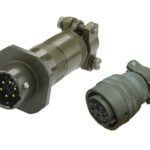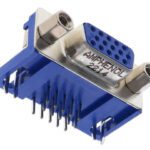What Are FAKRA Connectors And How Do They Work?
Meet the Connector: FAKRA Connectors
FAKRA connectors have been a mainstay of automotive connectivity for the past two decades. An average connected car contains at least 15 FAKRA connectors, and these versatile connectors are designed into telematics, GPS navigation, entertainment systems, Bluetooth, cellular, keyless entry, climate controls, radio antennas, safety systems, communications applications, and sensor systems for autonomous controls. A variation of subminiature version B (SMB) coaxial RF connectors, the FAKRA was developed by Rosenberger and standardized by the German Committee of Automobile Manufacturers. FAKRA is an acronym for Fachkreis Automobile or Working Group Automobile.
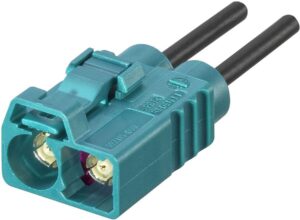
Rosenberger’s FAKRA connector has become the industry standard and a mainstay of automotive applications. Today, the design is available in numerous configurations.
FAKRA connectors consist of a plug and jack that mate via a push-on mechanism embedded within a plastic housing. An audible locking confirmation lets operators know a connection has been made. Some variations include a secondary lock. They are available in 14 different mechanical layouts. Color-coding enables easy identification and prevents mismatching.
There are several subtypes of FAKRA connectors: The original FAKRA I connectors are now primarily used in antenna applications. FAKRA II, the second generation of FAKRA, is considered the current base standard. They are available in a variety of angles and configurations, including an IP6K9K sealed and weather-resistant version for use in outdoor applications. Customized and miniaturized versions are available from some manufacturers. They are also used in non-automotive applications such as outdoor routers, industrial process control boxes, machine-to-machine modules, and IoT devices.
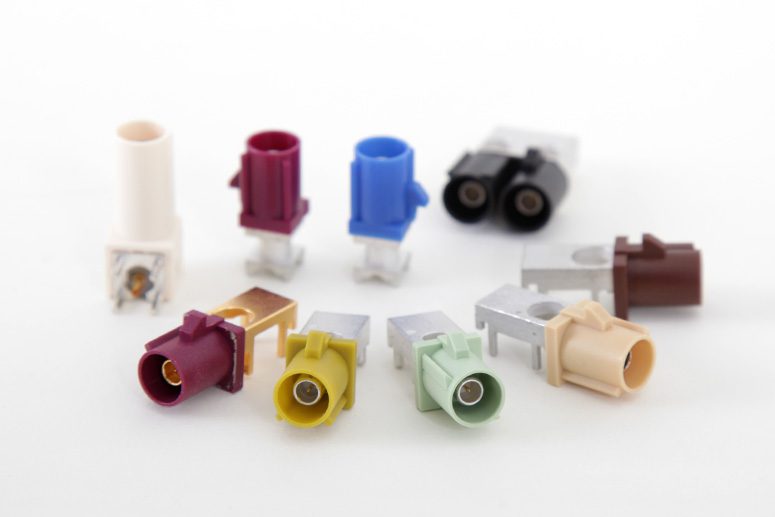
IMS Connector Systems offers FAKRA SMBA plus connectors in 13 different coding options. The locking system features primary and secondary locking features to guarantee mounting and contact safety.
Design Notes:
Standardization: The FAKRA standard defines the connector’s interface and mechanical and electrical characteristics, and is accepted worldwide by major car manufacturers and system suppliers for automotive communications and entertainment applications. FAKRA products are compliant to ISO 20860-1 & 2, DIN ISO 20860, SAE/USCAR 18 standards.
Mounting Type: Push-on
Mating cycles: These connectors are designed to handle 25-100+ mating cycles.
Configurations: FAKRA encompasses a complete line of configurations based on application, with various entrance angles, color coding, mechanical keying, and cable designation options.

JPC Connectivity offers several FAKRA interconnects options, including FAKRA cables with an optional buckle sheet metal clip. This product serves a temperature range from -40°C-105°C to meet the harsh environment needs of automotive systems.
Durability A rugged plastic housing helps protect FAKRA connectors from the harsh conditions vehicles face in operation, including debris, weather conditions, shock, and vibration. They are designed to handle a temperature range of −40°C to +105°C. Sealed versions are available.
Performance: FAKRA connectors are designed to perform up to 6 GHz and handle 335 volts RMS continuous. New miniature variations, such as TE Connectivity’s MATE-AX, reach 9 Ghz.
Assembly: To meet the needs of automated assembly, FAKRA connectors are optimized for tape and reel packaging. They are also suitable for selective, wave, and reflow processing.
Recent Developments: FAKRA connectors per ISO 20860-1 and -2 (or USCAR-17 and -18) are larger than the newer connectors being called FAKRA-mini (such as the HFM from Rosenberger). Traditional FAKRA connectors do not perform as well in RF testing, while the mini FAKRAs can reach 20 Ghz and 28 Gb/s . To avoid confusion, USCAR calls the new connectors “mini coax connectors.” An upcoming specification, USCAR-49, will define an industry-standard test specifically for mini coax connectors.
Markets, Sectors, Applications
FAKRA connectors are used for telematics, safety, and communications applications in the automotive industry, as well as in non-auto vehicles such as watercraft, motorcycles, and off-highway heavy equipment. They are used in safety, driver assist, V2V, and other in-vehicle networks.
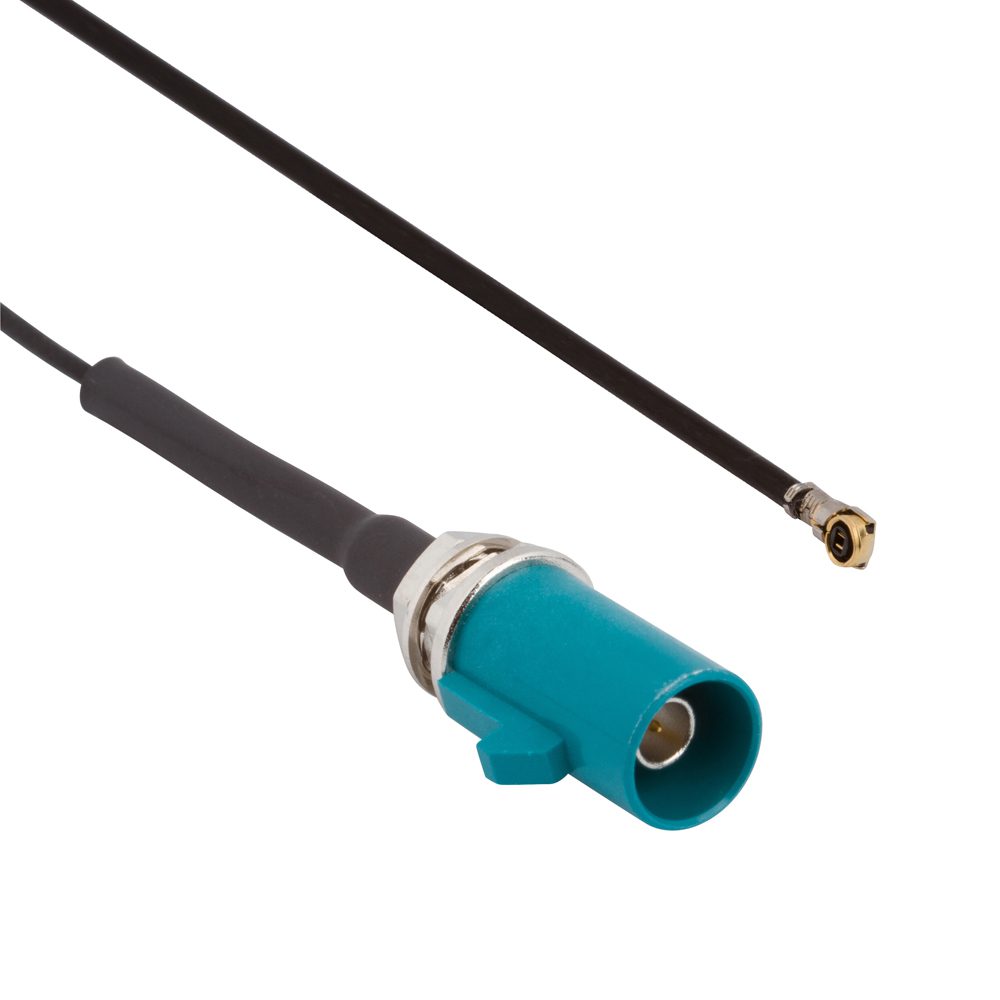
Amphenol RF’s FAKRA to AMC4 preconfigured assembly combines the FAKRA connector with the ultraminiature AMC4 connector on the flexible 1.13 mm micro coax cable for automotive and IoT applications where space constraints are a design consideration.
Suppliers
FAKRA are available from many connector suppliers including Amphenol RF, IMS Connector Systems, JAE, JPC Connectivity, Molex, Rosenberger, TE Connectivity, ACES Connectors, APTIV (available from TTI Inc.), Pasternack, Yamaichi Electronics
Related Products
Like this article? Check out our other articles covering Meet the Connector, RF and Coax connectors, Automotive Connectors Market Page, and our 2022 Article Archive.
Subscribe to our weekly e-newsletters, follow us on LinkedIn, Twitter, and Facebook, and check out our eBook archives for more applicable, expert-informed connectivity content.
- News From Hannover Messe 2024 - April 30, 2024
- Where in the World is Amphenol LTW’s Luc Kan? - April 23, 2024
- TE Connectivity’s Sustainability Efforts Pay Off - April 23, 2024
